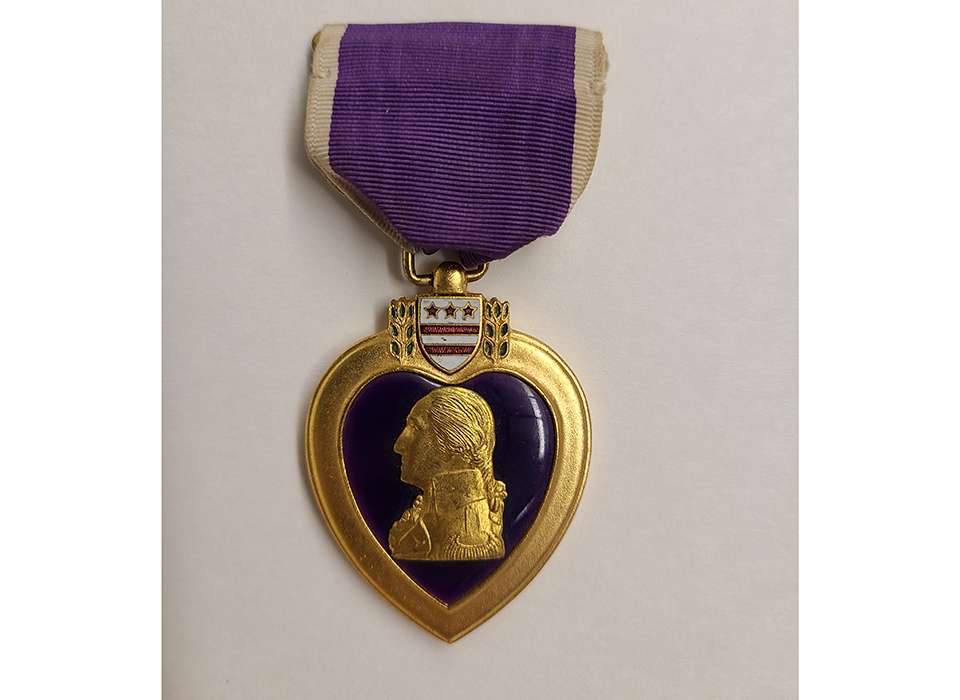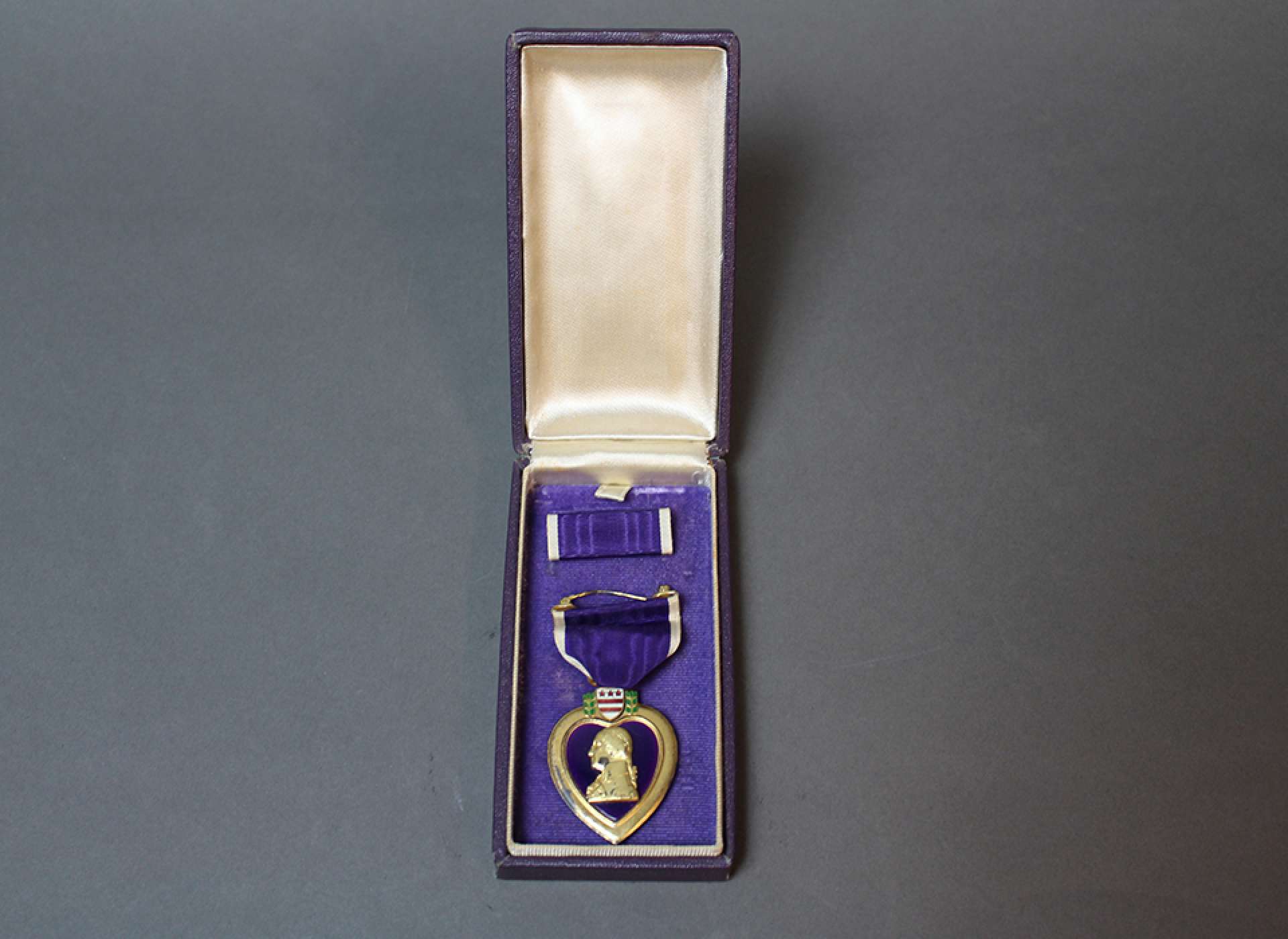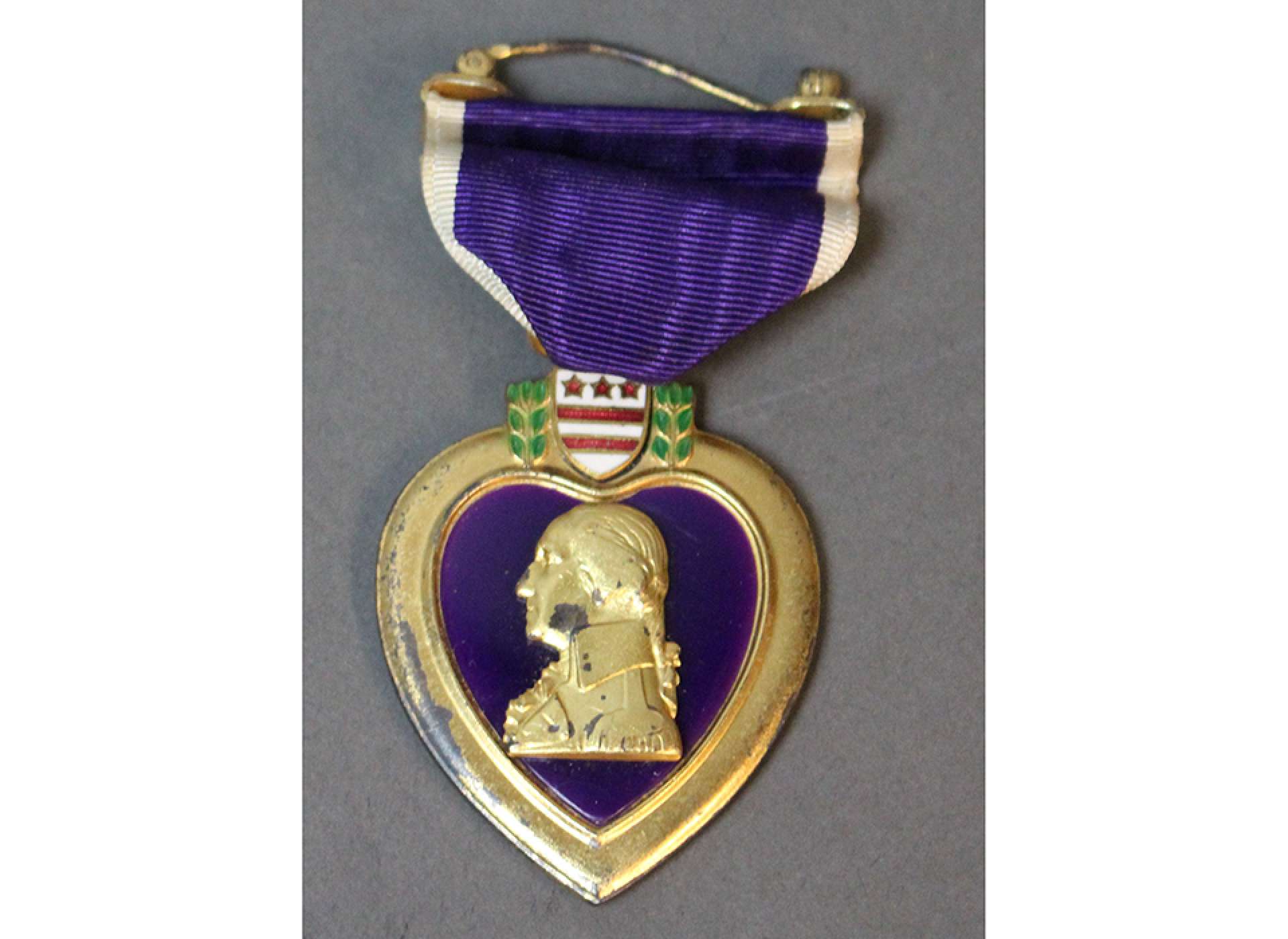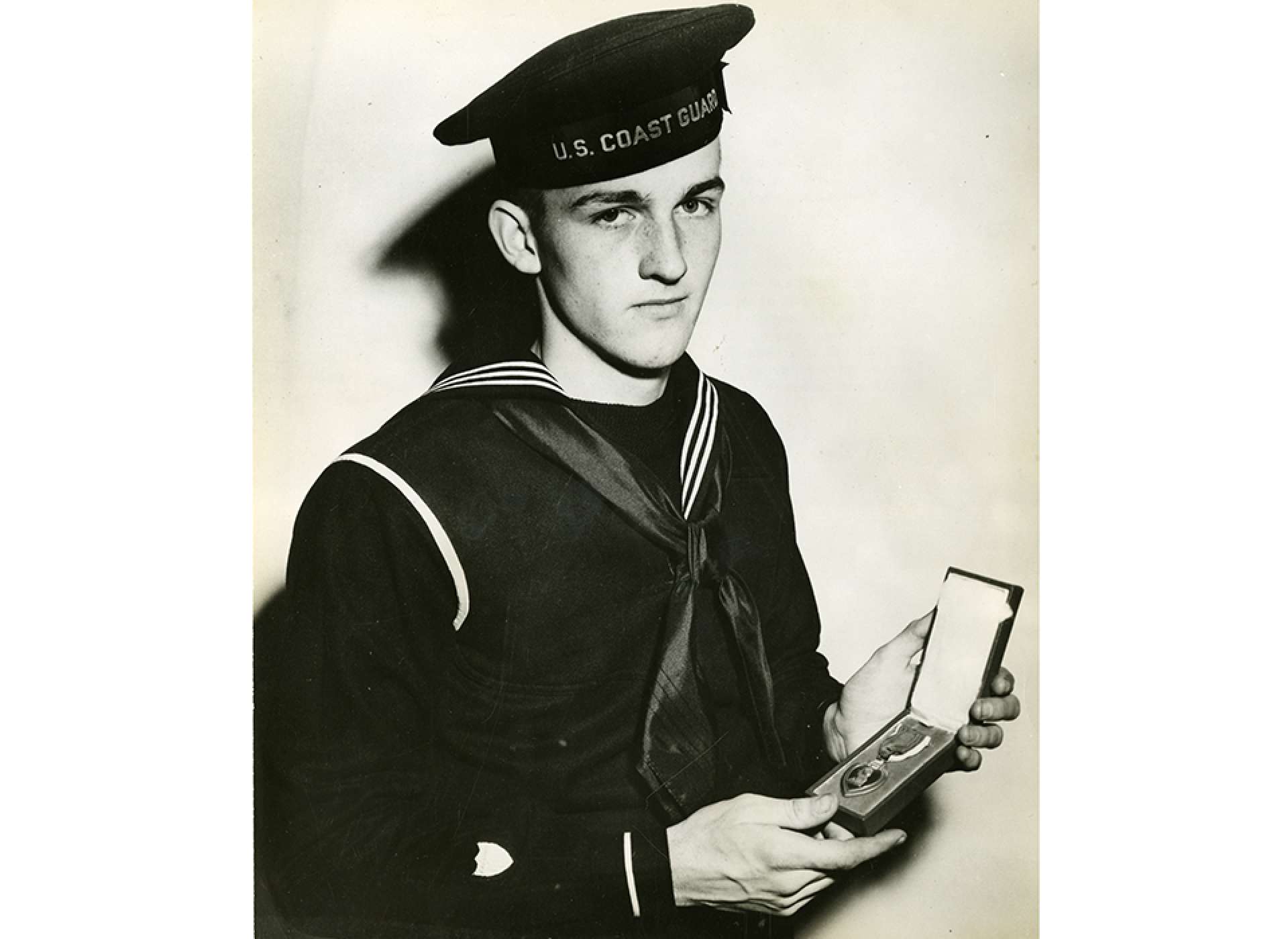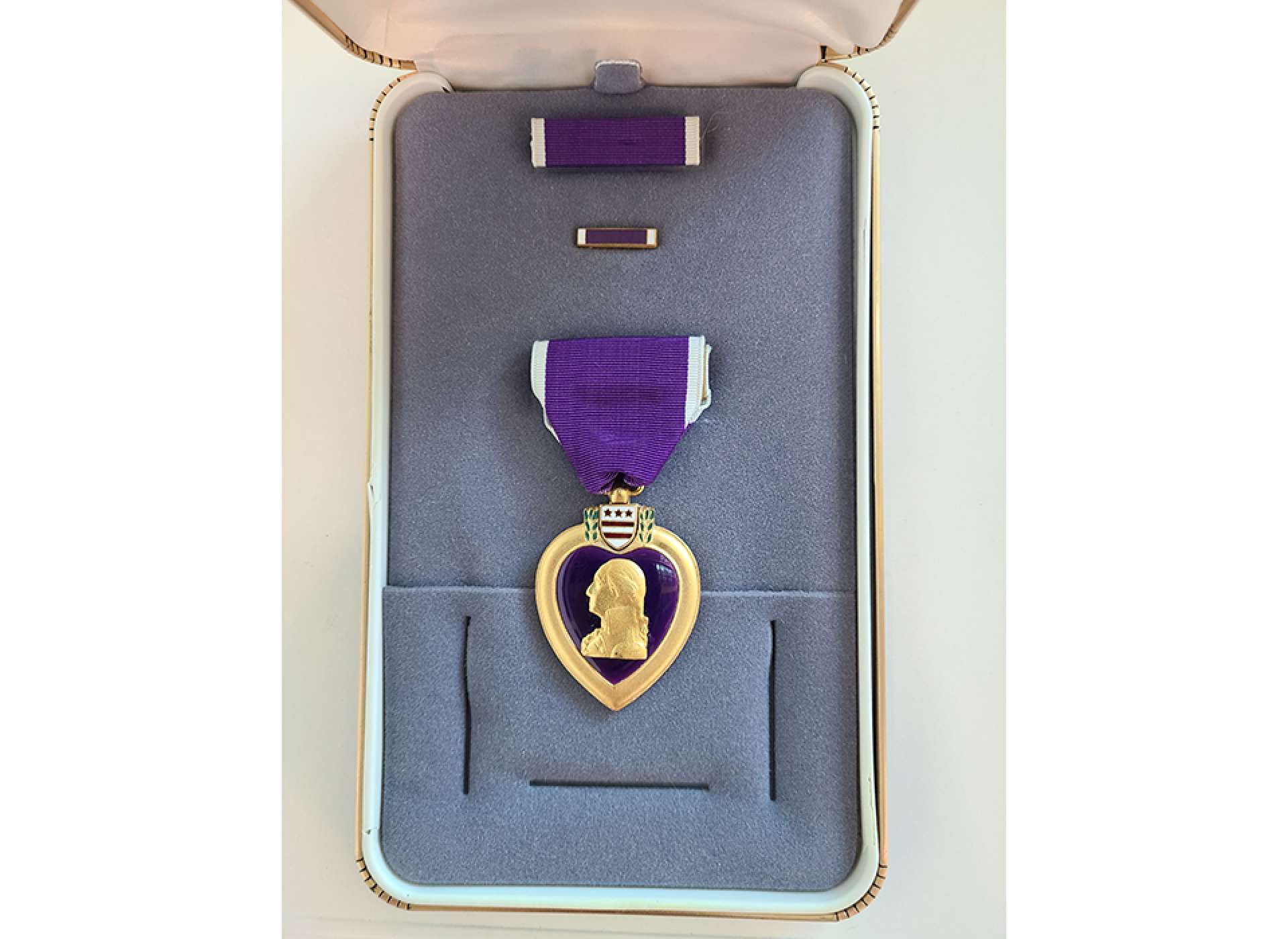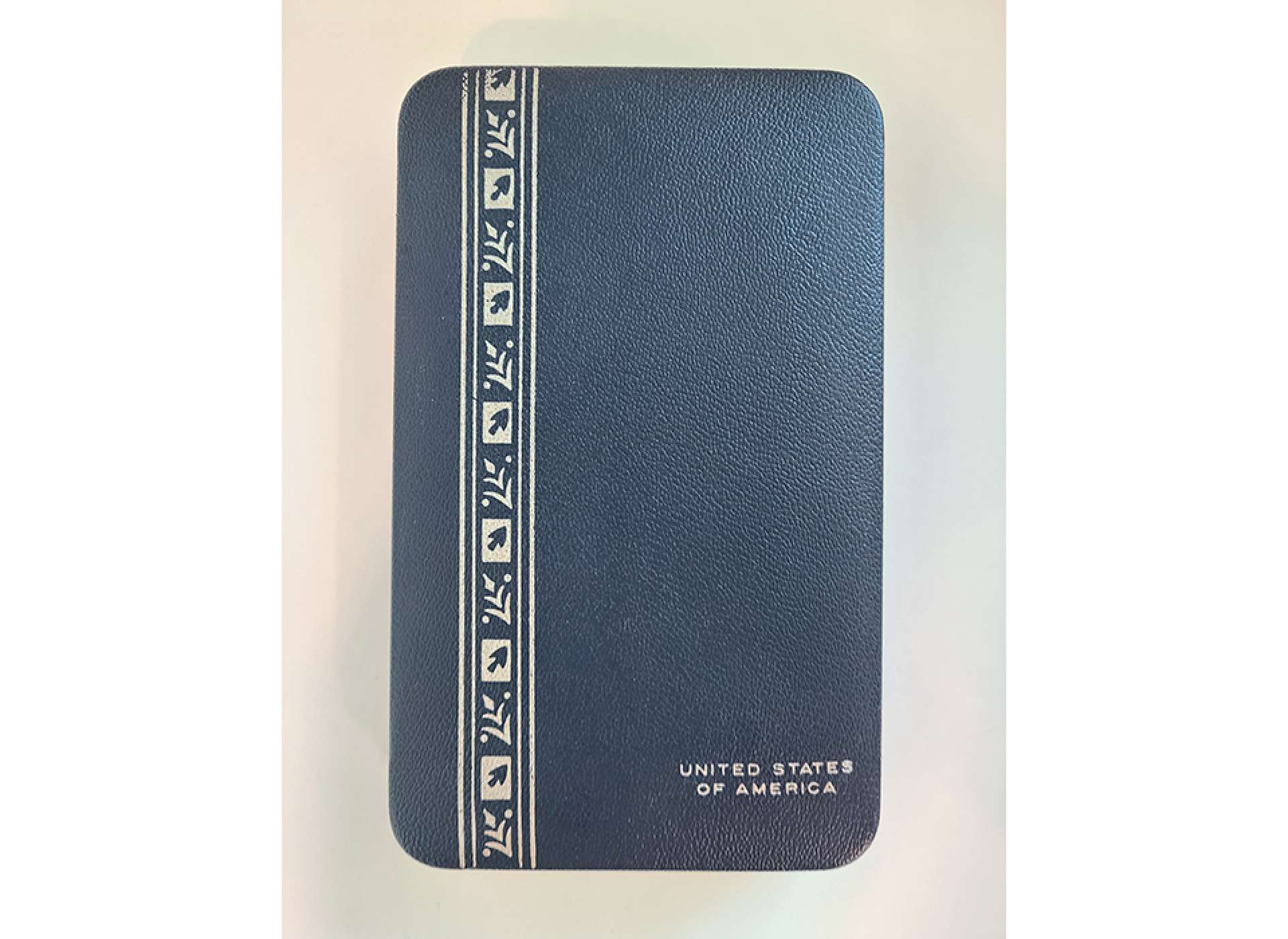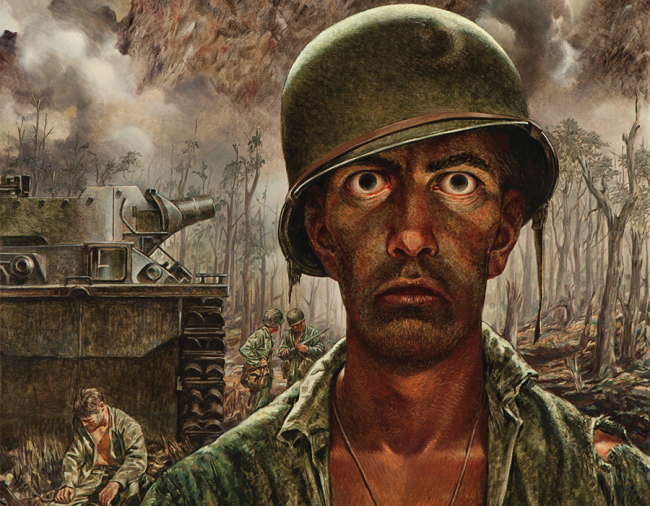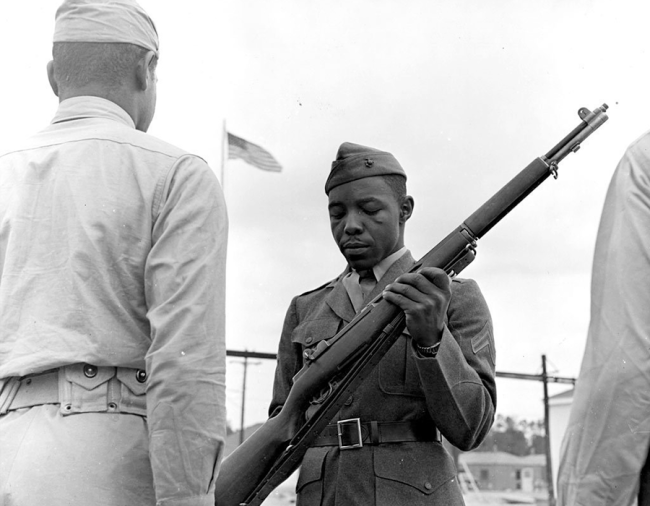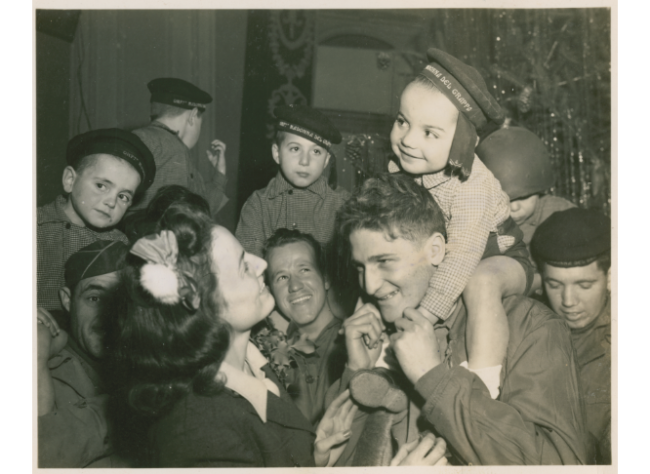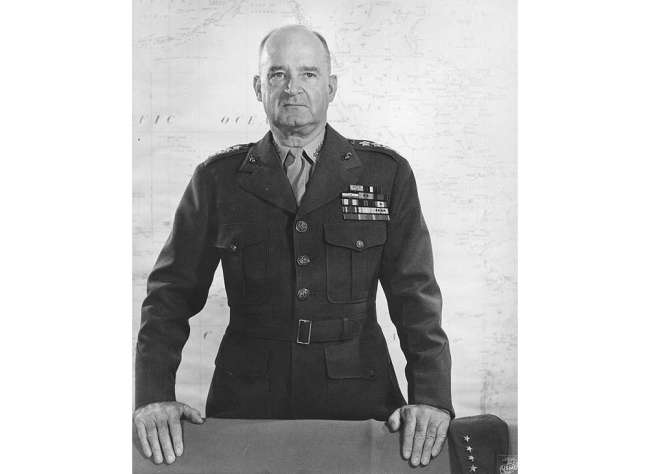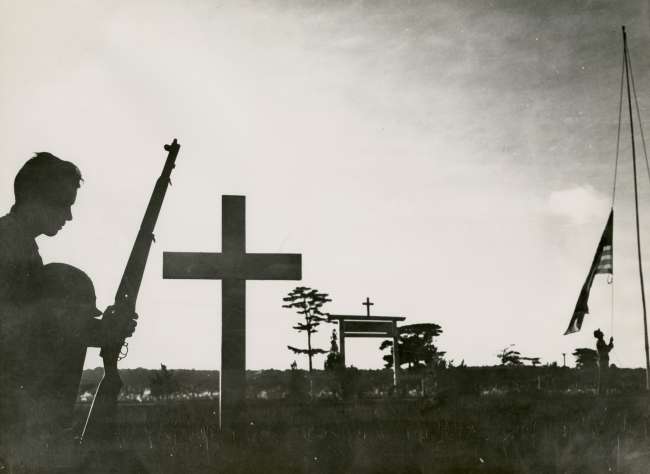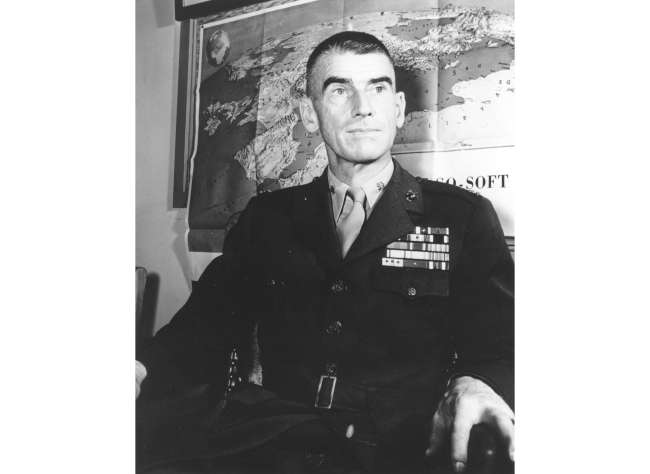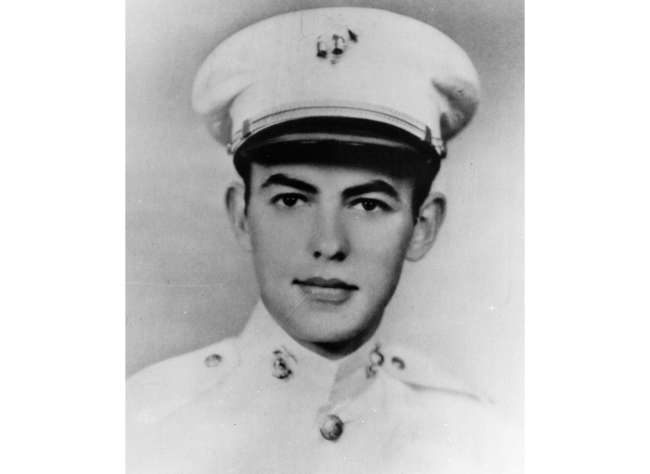Top Image: Gift In Memory of Lawrence W. Wells, 2021.
It is unlikely that Private First Class Clifton A. Duet ever heard the explosion that killed three men in his position and shredded his lower left arm. It was May 19, 1945, on a hill called Sugarloaf, during the Battle of Okinawa. At that moment, Duet had spent less than nine months in the US Marine Corps, however, he had been in combat since the April 1 landings on Okinawa, which was enough to make anyone a combat veteran.
On May 19, Duet and his unit, I company, 4th Marines, 6th Marine Division, were in the process of relieving the 22nd Marine Regiment on top of Sugarloaf hill when he was hit. He soon joined 70 of his comrades who were wounded or killed in the few hours it took to change places with the 22nd Marines. Duet woke up before he was placed in the grave that was being prepared for him, but the severity of his wounds led to the loss of his left arm below the elbow. The fight against the Shuri line continued for the 4th Marines, but for Duet his war was over. From that moment on he joined a new group of distinguished servicemembers, recipients of the Purple Heart.
-

Purple Heart in presentation box given to Pfc Clifton A. Duet USMC for wounds received during the battle of Sugarloaf hill on Okinawa. Duet was one of over a million Americans to receive the Purple Heart during World War II. Gift in Memory of Clifton Duet. 2014.316.003.
-

Close up of Purple Heart received by Clifton Duet. This medal was part of the 1942 US Mint Naval Purple Heart production run. Gift in Memory of Clifton Duet. 2014.316.003.
Apart from the Medal of Honor, one of the most recognizable awards in the US Armed Forces is the Purple Heart. “For military merit and for wounds received in action,” reads the citation issued to over 1 million men and women who served during World War II. The Purple Heart is the oldest active military award in the United States and, like the country it represents, has gone through many changes.
What now is known as the Purple Heart began as the Badge of Military Merit, established by George Washington on August 7, 1782. At that time, and for many decades afterwards, there were very few awards that common soldiers could receive in service of their country. Most awards, decorations, and medals were given to great commanders, aristocrats, or kings. Recognizing that the Continental Army was fighting a tough campaign, supplies were scarce, and pay was low, Washington felt a need to encourage his troops by establishing an award for valor and meritorious service. This established a precedent within awards systems for valor, defined as heroic actions in combat, and merit, which is proper performance of military duties not related to combat. Washington presented the Badge of Military Merit, which consisted of a cloth purple heart to be worn over the left breast, to three sergeants in his army.
Despite this great start, the Badge of Military Merit was soon forgotten for 150 years. In all that time only the original three were known to have been issued. It was not until World War I that an organized hierarchy of valor and merit medals began to take shape. At that point, the only American award that could be earned by soldiers and officers was the Medal of Honor. Other Allied and Axis nations had a number of medals that recognized different levels of valor and merit, which caused a general push for additional awards within the US Army.
Congress reacted by creating the Distinguished Service Cross and the Distinguished Service Medal. It was not until 1932 that US Army Chief of Staff Douglas MacArthur dusted off the old Badge of Military Merit and renamed it the Purple Heart. MacArthur issued General Order No. 3 on February 22, 1932 and declared that the newly named Purple Heart would be awarded for meritorious or valorous service in the US Army. In an attached line, additional criterion for the Purple Heart included, “A wound, which necessitates treatment by a medical officer, and which is received in action with an enemy of the United States, or as a result of an act of such enemy, may…be construed as resulting from a singularly meritorious act of essential service.”
In all conflicts before World War I, the only indication that a servicemember had been injured in action was the bandage placed over the wound. During World War I, a wound medal and ribbon were instituted, but were quickly replaced by wound chevrons. These chevrons were sewn on the lower right sleeve of a uniform, one chevron per wound. The addition of the wound criteria for the new Purple Heart changed everything for men and women wounded by enemy action and ended the short run of the wound chevron.
Before American entry to World War II, roughly 78,000 Purple Hearts were issued to US Army personnel who had been wounded as far back as the Civil War or had performed meritorious service during World War I. At that time, it was very common for soldiers to write in and apply for medals. If their letter was approved the medal was mailed to the recipient regardless of the conflict.
As the first Japanese torpedoes slipped into the shallow waters of Pearl Harbor on the morning of December 7, 1941, the Purple Heart was still only a US Army award. Because it was originally created by George Washington, and reinstated by the Army Chief of Staff, the Purple Heart could not be awarded to any other service branch. This changed over the course of 1942 with three major decisions.
First, in April 1942, the War Department decided that the Purple Heart would be issued to servicemembers who were killed in action as recognition of their sacrifice. In September, the meritorious service element of the Purple Heart was removed from its qualifications and given to the newly created Legion of Merit. From this moment on the Purple Heart could only be awarded for being wounded or killed by enemy action. Finishing out the year 1942, President Franklin D. Roosevelt authorized the Navy Department to award the Purple Heart to any Navy, Marine, or Coast Guard personnel who were wounded or killed in action beginning on December 7, 1941.
It is also worth mentioning that the Purple Heart is the highest award that is automatically given to any officer or enlisted person as soon as the criteria are met, meaning there is no proposal or review like other awards for valor or merit. It can also be awarded multiple times for wounds received on separate occasions.
-

Joseph Gadek Jr. accepting the Purple Heart for his brother who was killed on the USCGC Escanaba (WPG-77) when the cutter was sunk on June 13, 1943, during the Battle of the Atlantic. Posthumous awards were generally given to the next of kin of the deceased or a family member in service. Gift of the Scanlan Family, 2015.063.090.
-

Many wounded or killed servicemembers did not receive their Purple Heart until after the war. Non-issued medals, or replacement for lost medals, can be requested by a veteran using their service paperwork as proof of the commendation. This is an example of a wartime medal that was repackaged and issued to Sgt. Harold F. Stewart after World War II. Gift of Kathy Weir, 2015.436.
-

Presentation case for repackaged Purple Heart. The massive surplus of unissued WWII Purple Hearts were repackaged and continue to be issued to this day. Gift of Kathy Weir, 2015.436.
Given the requirements of the Purple Heart, there is always a story to be told by the number of medals issued and the number manufactured. By the end of World War II, over 1 million Purple Hearts were presented to men and women wounded or killed by enemy action. When the United States entered the war, each service branch initiated the process of planning for war. Using experience, statistics, and best guesses, they determined how many troops and supplies were needed to win World War II; sometimes they planned too much, sometimes far too little.
For example, the US Army determined that it would need about 9 million servicemen organized in over 200 divisions to defeat Axis powers. In reality, the overall number of troops they needed was very close to the estimate, but they over estimated on the divisions, only needing around 90 to win the war. Initially, orders for the Purple Heart in 1942 were thought to be sufficient to last the war, but the casualties mounted.
Driven by the horrific tolls of the dead and wounded, such as Clifton Duet on Okinawa, the US Navy and Army kept adding to their orders. Four main manufactures initially were producing around 600,000 medals. By the end of World War II, 1.5 million Purple Hearts had been struck in anticipation of the final cost of victory. Although casualties were higher than first expected, they did not meet the final dizzying number resulting in a surplus of almost 500,000 medals. These medals have a legacy that continues to this day because unlike other surplus items World War II, Purple Hearts remained in inventory, being issued during Korea, Vietnam, and into the modern conflicts against terrorism. As a symbol there are few other US military awards that evoke such an instant reaction, understanding, and appreciation for the cost of service to one’s country, especially during World War II.
Joshua Schick
Cite this article:
MLA Citation:
APA Citation:
Chicago Style Citation:
